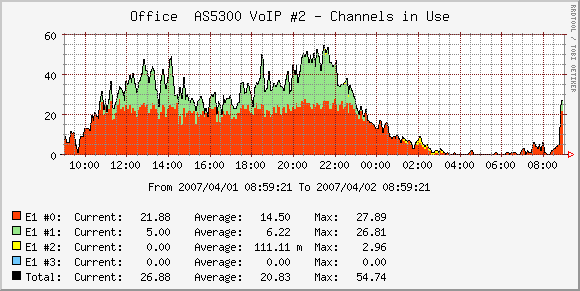This post is as much a reference for myself as it is for others. I had a need today to start graphing E1/PRI channel usage on some Cisco AS5300’s. The current priority is a simple graphical representation of the actual usage:

Hopefully at some point over the next couple of weeks I may expand this to other more interesting information such as average call duration, etc that can be useful to diagnosing issues almost as they happen.
The Cacti XML can be found here and I just posted the same to Cacti’s own forums here.
The CISCO-POP-MGMT-MIB provides the MIBs for this information and the ones I specifically used (for my AS5300 which are all identical with 4 E1/PRI ports) are cpmDS1ActiveDS0s.0.x (or .1.3.6.1.4.1.9.10.19.1.1.9.1.3.0.x). Replace x with the appropriate port number (0-3) as required.
Explore the available information yourself with:
$ snmpwalk -Os -c <community> <host> .1.3.6.1.4.1.9.10.19